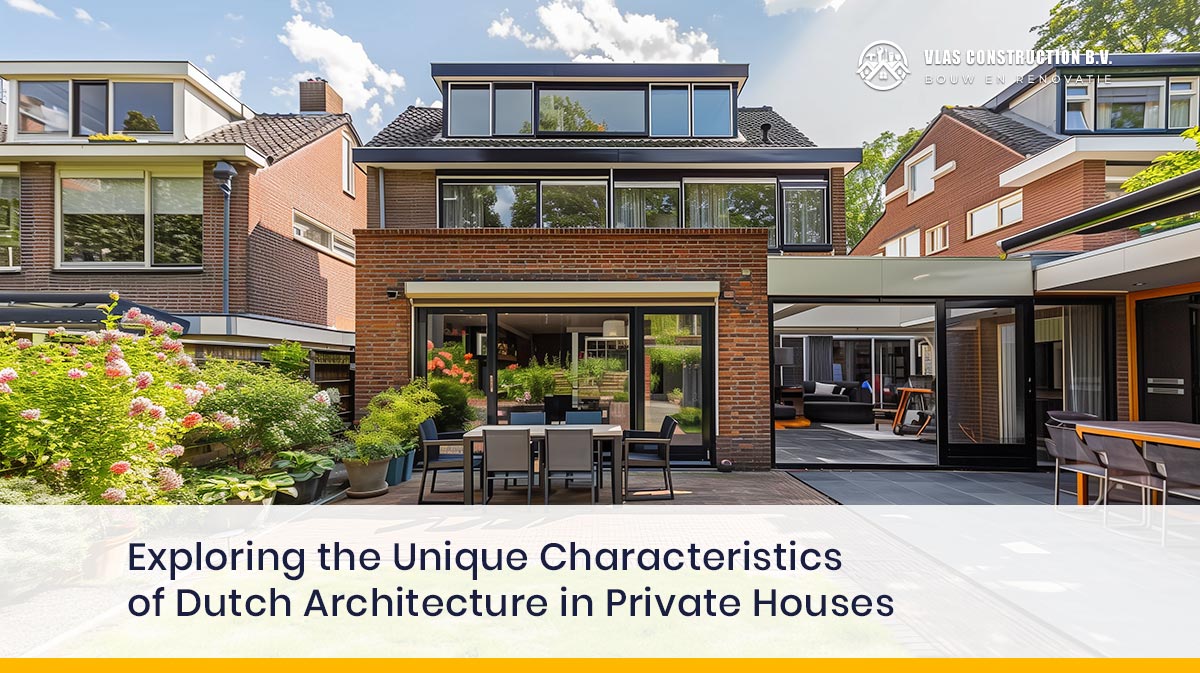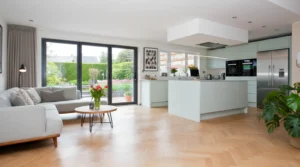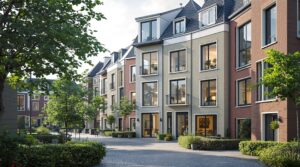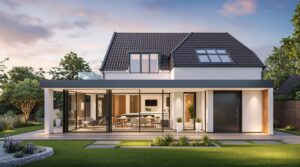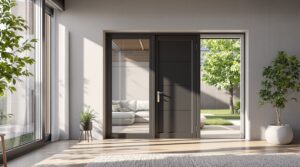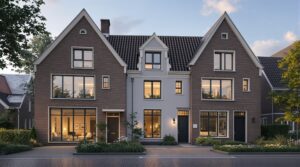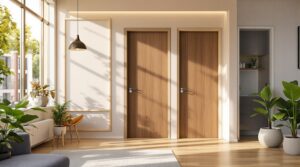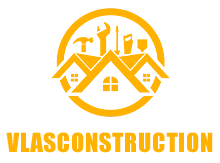Dutch architecture, renowned for its elegance, functionality, and timeless appeal, has long captivated the hearts of design enthusiasts and homeowners alike. Rooted in centuries-old traditions, the unique characteristics of Dutch private houses reflect a blend of historical influences and practical considerations. From iconic gabled roofs to charming brick facades, the elements of Dutch architecture continue to inspire modern home design. In this article, we delve into the distinctive features that define Dutch homes, offering a glimpse into the architectural heritage of the Netherlands.
Gabled Roofs
Types of Gables: One of the most recognizable features of Dutch architecture is the variety of gabled roofs that adorn private houses. Stepped gables, characterized by their stair-like silhouette, are perhaps the most iconic. Bell gables, with their curved, bell-like shape, and neck gables, featuring a narrow upper section, also contribute to the rich architectural tapestry of Dutch homes. These gabled designs are not only visually striking but also serve practical purposes, such as efficient rainwater drainage.
Historical Significance: The origins of these gabled roofs date back to the Dutch Golden Age, a period of prosperity and cultural flourishing in the 17th century. During this time, elaborate gabled facades became a symbol of wealth and status, with homeowners competing to create the most ornate designs. Over the centuries, these gables have evolved, blending traditional forms with contemporary interpretations, yet they remain a hallmark of Dutch architectural identity.
Large Windows and Natural Light
Design and Functionality: Dutch homes are renowned for their large windows, designed to flood interiors with natural light. This emphasis on illumination not only enhances the living environment but also reflects the Dutch appreciation for the beauty of their natural surroundings. Historically, large windows were a practical response to the country’s often overcast weather, ensuring that homes remained bright and welcoming.
Traditional and Modern Interpretations: While traditional Dutch homes feature expansive, multi-paned windows with intricate mullions, modern interpretations favor sleek, uninterrupted glass surfaces that offer panoramic views. Both styles, however, maintain the core principle of maximizing natural light, creating airy and inviting spaces that bridge the gap between indoors and outdoors.
Brick Facades
Material and Aesthetics: The use of brick is a defining characteristic of Dutch architecture, lending homes a distinctive, timeless charm. The warm, earthy tones of brick facades create a sense of solidity and permanence, harmonizing with the natural landscape. The craftsmanship involved in traditional bricklaying, often featuring decorative patterns and textures, adds an extra layer of visual interest.
Construction Techniques: Traditional Dutch bricklaying techniques, such as the “Flemish bond” and “Dutch bond,” involve alternating bricks in complex, interlocking patterns. These techniques not only enhance the structural integrity of buildings but also contribute to their aesthetic appeal. Today, modern construction methods continue to celebrate the beauty of brick, incorporating it into contemporary designs that honor the past while looking to the future.
Canalside Homes and Narrow Frontages
Urban Planning: The iconic canalside homes of cities like Amsterdam are a testament to Dutch ingenuity in urban planning. Due to the limited space along the canals, homes were built with narrow frontages, often only a few meters wide. This unique layout necessitated creative architectural solutions to maximize living space within a compact footprint.
Architectural Solutions: To overcome the constraints of narrow plots, Dutch architects developed innovative interior layouts that make efficient use of vertical space. Tall, narrow buildings often feature steep staircases, mezzanine levels, and multi-functional rooms that adapt to various needs. These design principles continue to influence contemporary urban housing, demonstrating the enduring relevance of Dutch architectural solutions.
Decorative Elements and Ornamentation
Traditional Decorations: Dutch private houses are adorned with a variety of decorative elements that showcase the country’s rich artistic heritage. Ornate doorways, elaborately framed windows, and intricately carved cornices are common features that add character and charm to homes. These decorations often reflect the craftsmanship of local artisans and the cultural influences of different historical periods.
Cultural Influences: The decorative features of Dutch homes are a reflection of the country’s diverse cultural heritage. Elements such as Delft blue tiles, inspired by Chinese porcelain, and Baroque motifs from the Golden Age highlight the blend of international influences that have shaped Dutch design. This fusion of styles creates a unique architectural language that is both eclectic and cohesive.
The unique characteristics of Dutch architecture in private houses offer a fascinating glimpse into the Netherlands’ rich cultural and architectural heritage. From the iconic gabled roofs and large windows to the charming brick facades and innovative use of space, these elements continue to inspire and inform modern home design. By appreciating and incorporating these features, homeowners can create spaces that honor the past while embracing contemporary needs. For expert architectural and construction services, contact Vlas Construction B.V. Their team of professionals can help you bring the timeless elegance of Dutch architecture into your home.

